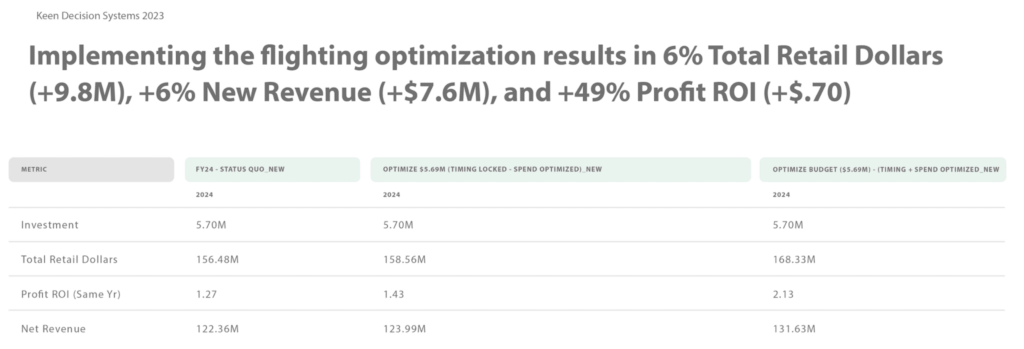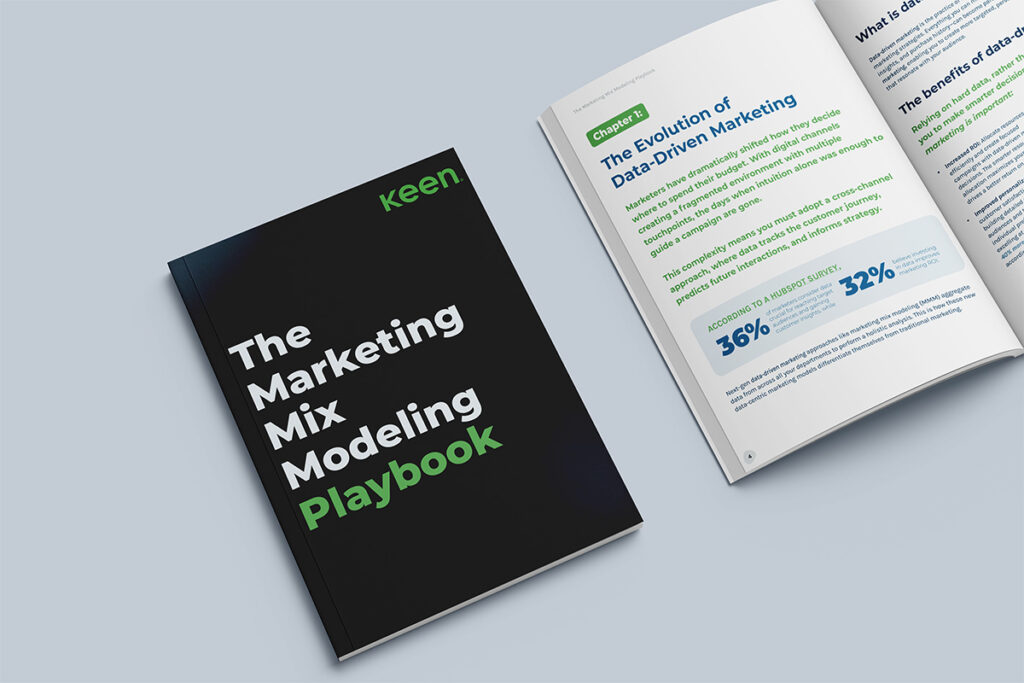Want to make your ad budget go further? Advertising flighting is your solution. It’s a strategic way to run ads in bursts, maximizing impact while saving costs.
Instead of always being “on,” a flighting schedule times your ads for when they matter most—like a soup brand advertising in winter. It’s cost-effective, flexible, and keeps your brand visible without overspending.
Here’s how flighting works and how you can use it to get the most out of your marketing budget.
Key highlights:
- Flighting in advertising helps brands maximize ad impact without constant spending.
- An advertising flighting strategy saves budget and leverages seasonality, especially for brands with fluctuating demand.
- Flight schedules can be flexible and include short hiatuses to maintain profitability.
- There may be some sacrifices in net profit.
What is flighting in advertising?
Flighting in advertising is a media purchasing strategy that alternates between periods of actively running ads and rest periods. Flighting or “flight” is the time when ads are running, while the period with no advertising is called a hiatus.
An example of flighting strategy in advertising is a soup company that might want to flight during the colder winter months and pull back spend as things start to heat up over the summer.
Why do advertisers use a media flight plan?
Flighting is used for two main reasons:
- Saving budget
- Taking advantage of seasonality in marketing
Flight advertising saves budget
Flighting is most commonly used in the context of television ads, which are expensive. A brand manager might not have the budget to run continuous TV commercials all year, but still want TV to be part of a broader strategy.
The theory is that the brand will continue to receive the residual impact of the ads that ran during the flight period while on hiatus. Marketing will have an influence on sales that will last longer than the time period of the campaign. The brand gets to save budget and use that money as part of an omnichannel marketing approach while still helping to drive new sales through TV.
Advertising flighting helps seasonal brands
Some brands have a seasonal sales cycle. For those types of brands, they are going to want to save money during their slow periods and advertise more heavily when their product or service has higher demand. Flighting advertising helps these brands optimize marketing spend and maximize the impact in high-demand periods.
For example, we worked with a highly seasonal brand that provides category-leading products for planning and organizing work, school and play. For years, they relied on a back-to-school investment strategy. With Keen’s recommended optimizations to the channel investment allocations and flighting strategy, the brand was able to build momentum before its key season to maximize the value of its prime weeks.
The result? A 49% increase in profit, a 6% growth in new revenue, and a 6% increase in total retail dollars.

What are flight schedules?
The flighting schedule is the cadence of the flight and hiatus periods. The key to a successful flight strategy is finding the right schedule. For example, you could:
- Flight for 2 weeks and go on hiatus for 2 weeks or
- Flight for 4 and go on a hiatus for 4
Keep reading to see our research on optimal flight schedules.
3 alternatives to flighting
Marketing and advertising schedules are as unique as the brands they’re promoting. That being said, flighting is just one of a few approaches to allocating your budget and efforts throughout the year.
1. Continuous marketing
Continuous marketing is an advertising strategy with an even spend year-round. It helps brands see the highest return on their marketing investment. All things being equal, this is what Keen would recommend for the vast majority of brands.
2. Pulsing advertising
Pulsing in advertising is a mix of continuous marketing and flighting. Instead of going on hiatus, the brand lowers spend in one period and increases during the next period. This way, the brand doesn’t completely lose the momentum from their campaign while maintaining some control over their budget.
3. Bursting
Bursting is an advertising strategy that involves running ads at a high intensity over a short period, creating a concentrated impact. This approach is often used for product launches, seasonal promotions, or time-sensitive campaigns to quickly build awareness and drive immediate action.
Difference between flighting, bursting, pulsing, and continuous advertising
So, which advertising approach will work best for your brand? Your product, goals, and budget are all factors in determining which strategy makes the most sense. If you have multiple products or services, you can also test approaches against each other.
| Aspect | Flighting | Bursting | Pulsing | Continuous advertising |
| Ad activity | Alternating periods of high activity and breaks. | High intensity in short bursts. | Mix of steady activity and increased periods. | Steady, consistent activity year-round. |
| Budget use | Spend in cycles with breaks in between. | High spend for a short period, then low. | Lower spend during breaks, higher during active periods. | Even spend throughout the year. |
| Goal | Build awareness and drive sales in phases. | Quickly build awareness and drive immediate action. | Maintain steady presence while controlling spend. | Maximize return on investment with consistent reach. |
| Suitability | Best for seasonal campaigns or periodic promotions. | Ideal for product launches or limited-time offers. | Suitable for brands looking for balanced spend and impact. | Great for brands with consistent, long-term goals |
| Time frame | Short to medium term, with breaks in between. | Short-term, high-impact. | Medium to long term with flexible budget allocation. | Long-term, ongoing strategy. |
The best flight schedules: Keen research
At Keen, we help marketers with scenario-based marketing planning to maximize their budgets. Using data from Keen’s MMM Platform, we took a look at different flight schedules to show the impact of these schedules on net profit.
Our media flight plan case study compared three scenarios of linear TV advertising:
- Always-on: The brand maintained a consistent advertising presence with no hiatus periods.
- 2-week flighting: Ads ran for two weeks, followed by a two-week hiatus.
- 4-week flighting: Ads ran for four weeks, followed by a four-week hiatus.
2 week flight
After two weeks, flighting reaches just 91% of the net profit of “Always On”

4 week flight
With the 4-week flight, profit builds higher each week, and the initial flighted week starts with lower net profit over time.

Results
Here are the results of our study:
- The winner: Our study revealed that the 4-week flighting strategy outperformed the 2-week flighting, primarily because the long-term impact of marketing allowed brands to build brand equity and create more value with consistent activity.
- The impact of going dark: We found that after a two-week hiatus, the first week of advertising flight generated 91% of the profit compared to the always-on strategy. However, each additional two-week period of going dark led to a 1% decline in the profit generated on the first week of flighting again. This indicates that longer hiatus periods in the advertising schedule can negatively impact profitability.
- Longer hiatus periods: When comparing the 4-week flighting strategy, the first week of flight ads after a four-week hiatus generated only 88% of the profit compared to the always-on strategy. This further demonstrates the quantifiable impact of “going dark for longer.”
- Building equity with longer flighting periods: Although the first week of flighting after a four-week hiatus started at 88% of the profit, by the fourth week, we observed up to 95% of the profit compared to the always-on strategy. This suggests that consistent advertising activity can help brands build and maintain brand equity and recover potential profit losses.

Key takeaway: If you are adopting a flighting advertising strategy, know that you are likely going to sacrifice net profit from the channel you are flighting. What you need to decide is whether the opportunity cost from distributing the saved funds elsewhere is greater than the net profit lost during your media flight plan.
Is flighting your advertising budget the right strategy for your business?
The answer depends on your industry, products, and budget. To decide, you can use the Keen Platform. It can ingest the data from your brand, pair it with 40 years of academic research and 10 years of our metadata to create a marketing mix model that predicts your future revenue.
If you are interested in using flighting advertising or want to know what your optimal schedule should be, our models are used to run different scenarios and help you make informed marketing decisions with your budget in weeks, not months.
Start a free trial today and see how we can help with your advertising flighting strategy.





